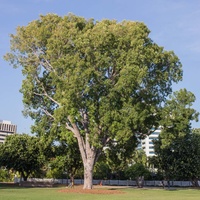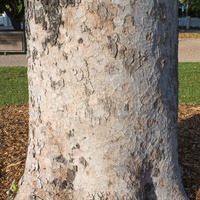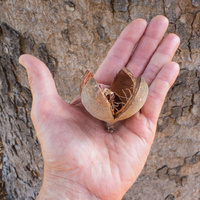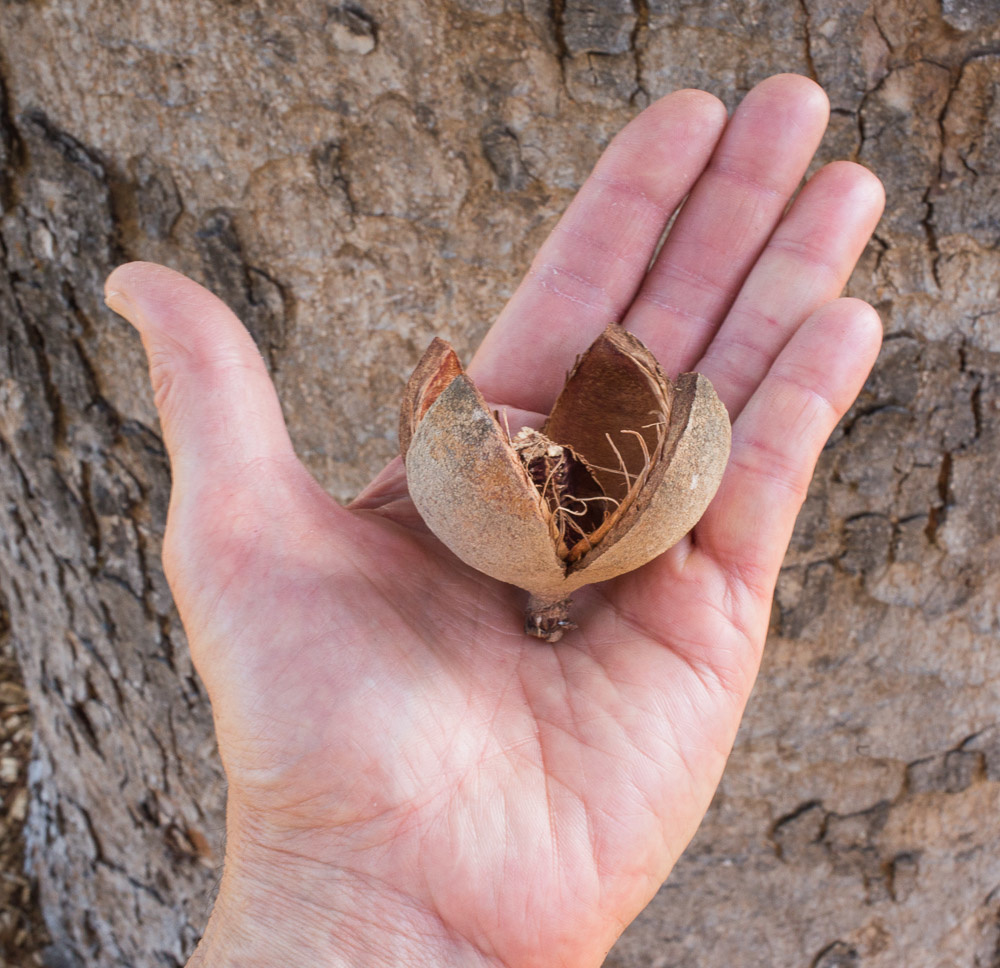Common name: Dryzone Mahogany
Other common names: African Mahogany, Bastard Mahogany, Gambian Mahogany, Nacre, Senegal Mahogany
Description
Dryzone Mahogany is a fast-growing timber tree originating in tropical Africa, its natural range extending from coast to coast across the African continent, east-west along a narrow geographic band just north of the equator.
It may grow to 30 m (100 ft) tall under forest conditions and develops a reasonably straight trunk, tending to be short on trees in the drier parts of its range and buttressed at the base of large trees. The crown is roundish and dense, consisting of large, feathery leaves with numerous leaflets. The leaves fall during the dry season, leaving the branches almost bare until the rainy season when the new leaves emerge.
Flowers are creamy-white and singularly insignificant but bloom in large, showy clusters during the dry season and are either female or male on the same tree. Fertilised female flowers develop into round, tennis-ball-sized, brown, woody seedpods enclosing many winged seed.
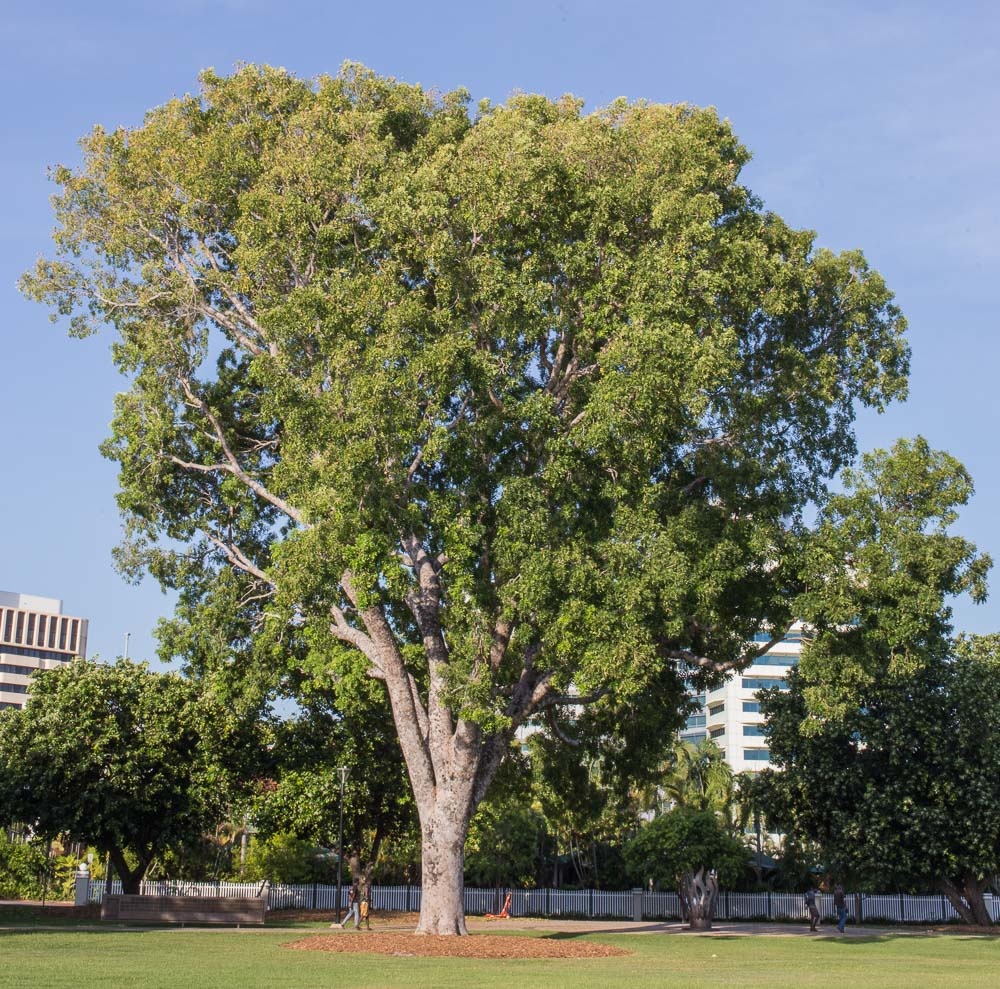
Darwin, Australia
Seedpod
Use
The wood weight averages 600 kgs per cubic meter (37 lbs per cubic ft), putting it at the soft end of the hardwood scale. Its natural resistance to termites and marine borers is as yet unknown. The main uses are in light construction, including interior flooring and for making furniture and cabinets. Selected roundwood is sliced for decorative veneer, and the branchwood is cut for firewood.
The flowers are a major nectar source for honeybees in Senegal and a moderate to minor source in Guinea-Bissau. Still, there appears to be little information on the honey itself, its colour, taste or other edible qualities.
Climate
Grows naturally and produces good quality, valuable timber in sub-humid to moderately humid tropical lowland climates, generally areas with annual lows of 16 to 25°C, annual highs of 27 to 35°C, annual rainfall of 800 to 4500 mm and a dry season of 4 to 7 months.
Growing
New plants are usually started from seed. However, vegetative propagation is being trialled to overcome issues of high variability in seed-grown trees, particularly with trunk size, shape and uniformity.
Performs well on a wide range of clay, loam or sand soils, from free- to slow-draining, dry to moist and from acid to slightly alkaline, generally with a pH of 5.0 to 7.5. Sites with full sun exposure give the best results. It has good tolerance to seasonal drought and flooding.
Problem features
The winged seed can float on the wind over long distances and germinate readily. In Australia, it is recorded as having escaped cultivation and as a weed of the natural environment.
Dryzone Mahogany is not recommended for planting close to buildings or in public areas due to its vigorous roots, which can damage foundations. The tendency for its branches to break in strong winds and fall can potentially cause personal injury or damage to property.
Where it grows
References
Books
-
Bechtold, Thomas & Mussak, Rita 2009, Handbook of natural colorants, Wiley, Chichester, U.K
-
Bradbear, N. 2009, Bees and their role in forest livelihoods : a guide to the services provided by bees and the sustainable harvesting, processing and marketing of their products, Food and Agriculture Organization of the United Nations (FAO), Rome
-
Crane, E., Walker, P. & Day, R. 1984, Directory of important world honey sources, International Bee Research Association, London
-
Food and Agriculture Organization of the United Nations (FAO) 1986, Databook on endangered tree and shrub species and provenances, FAO Forestry Paper 77, Forest Resources Division, Rome
-
Francis, J. K. 1998, Tree species for planting in forest, rural, and urban areas of Puerto Rico, U.S. Department of Agriculture, Forest Service, International Institute of Tropical Forestry, Río Piedras, Puerto Rico
-
Francis, J. K. et al. 2000, Silvics of Native and Exotic Trees of Puerto Rico and the Caribbean Islands, Technical Report IITF-15, USDA Forest Service, Rio Piedras, Puerto Rico
-
Howes, F. N. 1949, Vegetable gums and resins, Chronica Botanica Company, Waltham, Massachusetts
-
Krishen, P. 2006, Trees of Delhi : a field guide, Dorling Kindersley Publishers, Delhi
-
Lemmens, R.H.M.J., Louppe, D. & Oteng-Amoako, A.A. (eds). PROTA, Plant Resources of Tropical Africa, Volume 7(1) : Timbers 1, PROTA Foundation, Backhuys Publishers, Leiden
-
Randall, R. P. 2002, A global compendium of weeds, R.G. and F.J. Richardson Press, Melbourne
-
Randall, R. P. 2007, The introduced flora of Australia and its weed status, Cooperative Research Centre for Australian Weed Management, Glen Osmond, South Australia
-
Webb, D. B. 1984, A Guide to species selection for tropical and sub-tropical plantations, 2nd ed., Unit of Tropical Silviculture, Commonwealth Forestry Institute, University of Oxford, Oxfordshire
